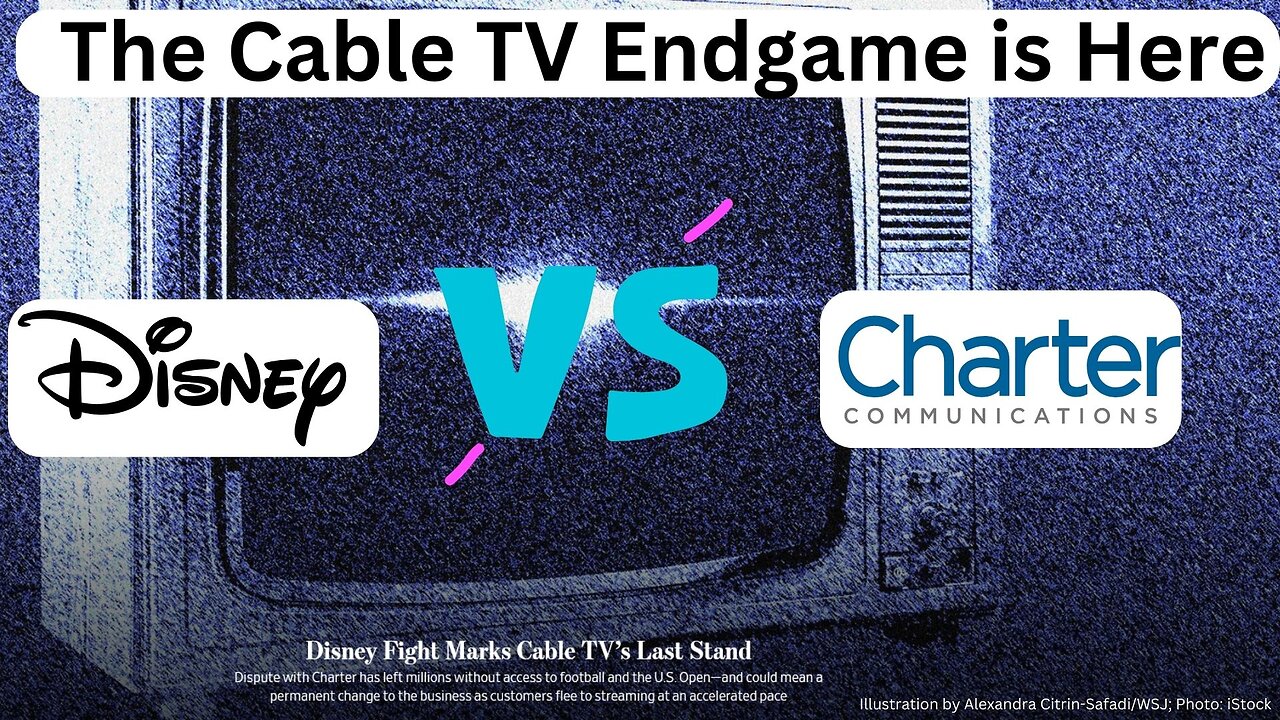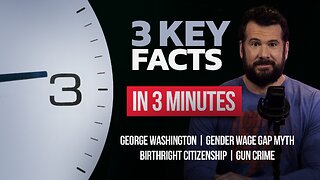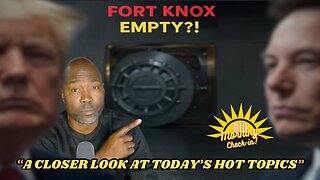Premium Only Content

The Cable TV Endgame is Here: Disney vs. Charter Communications
The Cable TV Endgame is Here: Disney vs. Charter Communications
The ~$200 billion TV industry is starting to crumble as the foundation laid by a decades long alliance of programmers and distributors begins to give way.
Over the past decade, ~42 million US households have abandoned traditional pay TV plans. Most of these households gave up on live television entirely. The cable-TV industry thrived for decades based on the model of charging users for more channels than they could possibly watch. The cable providers then paid out a portion of the fees to channels they carried. Entertainment giants steadily began demanding larger fees for their channels, which drove up the price of cable further, and resulted in more consumers cutting the cord. Contrast this with the relatively low price of a service like Netflix. At this point, I would argue the main selling point of the traditional cable TV package is live sports, but now both ESPN+ and Peacock have exclusive NFL games on their platforms this season.
Disney’s fight with the nation’s number 2 pay TV provider, Charter Communications could represent the endgame for cable TV as we know it. Charter has almost as many pay TV subscribers as the number 1 pay TV provider, Comcast.
Charter’s cable service is called “Spectrum. This latest feud has left 15 million customers of Charter’s Spectrum cable service without access to Disney’s ESPN and other channels. Charter has suggested it may exit the pay-tv business entirely. This is a threat they may very well make good one and I am going to tell you why shortly.
There is an existential threat for Charter that its customers will walk away from it during the standoff with Disney and not return. However, Disney is also losing access to millions of households too. Disney makes a significant amount of revenue from cable, especially for ESPN which is about 75% of what it is charging for given how expensive the rights for sports are. Cable is the cash cow for the television industry, and specifically entertainment programmers like Disney. They use money from cable to produce new shows that they can put on the streaming services. Cable is effectively subsidizing streaming. Consumers are rapidly cutting the cord and abandoning cable TV at an accelerating pace. This, in part, is enabled by companies like Disney, Warner Bros. Discovery, and Paramount Global which have made high value cable content available through their streaming services.
These companies are trying to strike a balance that is all but impossible: allowing cable tv to somehow wobble along so they can turn around and plow those profits into streaming services which are currently losing billions of dollars a year collectively. Said another way, they are trying to keep milking the legacy cable-TV as long as possible to prompt up unprofitable streaming business until it can become profitable. The balancing act is to not kill the cable TV model entirely because that money is needed to keep supporting streaming until it can stand on its own two legs. Pay TV companies are effectively subsidizing streaming, which is cannibalizing cable TV. The chief content officer at DirecTV describes it as “Taking our money and weaponizing it against us is a problem.”
Entertainment companies claim they are trying to find ways to include pay TV partners in the shift to streaming, but this is just lip service in my opinion. The relationship between pay cable TV providers and entertainment programmers has become more adversarial, as they two camps have increasingly contrasting goals.
Charter has an conflicting business model. They do not make very much money from cable TV.
Many small cable providers have stopped offering TV bundles to their subscribers and are referring them to internet-TV providers such as Google’s YouTube TV. The broadband internet business is more lucrative and you are increasingly seeing companies pivot towards it. This is why Charter has the strong hand in regards to Disney. There is a 45% overlap between Charter’s internet broadband service area with that of a competitor offering similar broadband services.
Another interesting component of the negotiation is that Charter is demanding that Disney’s streaming apps, which include Disney+, Hulu, and ESPN+, be made available at no cost to its pay TV customers. However, Disney wants to be paid more for these streaming services. Charter believes they are more than adequately compensating Disney for their services. Disney is seeking to portray Charter as abandoning their customers. Charter is going to argue that Disney wants to increase everyone’s cable bill.
Charter says that 25% of its subscribers regularly engage with Disney content. However, more than 25% of its content costs are derived from Disney. Therefore, although Charter could lose subscribers, it is in a position to shed more expenses than it does revenue.
Disney, and the entertainment industry, already face a crisis with the actor and writers’ strike. However, in this case I would argue that Disney is in a better negotiating position than the unions, but in a weaker position versus Charter Communications. The collapse of cable pay tv would be bad for actors and writers as they get paid better for cable TV rather than streaming content. What may happen is that Disney scores a win against the writers and actors, but has to make concessions to Charter.
Charter is threatening to leave TV altogether. This is no longer the early days of cord cutting. Subscribers are leaving quickly.
Disney’s free cash flow has been greatly diminished as of late. They want to hold on to revenues from cable to staunch the bleeding that is the losses from streaming until it becomes more profitable. The thing is, I’m not sure streaming will ever be as profitable as people think. It hasn’t been thus far, and I’m not sure what would allow losses to pivot towards profits. Streaming services will have to leverage global scale to become more profitable. The piece that I think many analysts are missing is that a lot of young kids are watching YouTube more than they are watching scripted television on streaming services. This miscalculation may mean that streaming is less profitable than many analysts think.
ESPN
In the early days of cord cutting, when there was a loss of subscribers, this would result in a reduction of the carriage fees earning by the entertainment companies, which would then turn around and demand a larger fee per subscriber from pay tv companies. Disney in particular had a strong hand because it had ESPN and that was the main event on television. Sports is perhaps the only thing that is holding strong on television. The audience skews young.
Charter wants the freedom to not offer ESPN. ESPN is the most expensive thing in the cable bundle by far. Disney charges Charter an estimated $12.50 for all Disney bundled channels. ESPN is roughly three-quarters of that. If Charter can eliminate EPSN, that would make the cable bundle significantly cheaper.
Charter argues that being tied to ESPN makes them less competitive. They would prefer to sell skinny bundles which are stripped down bundles. They believe they can slow the decline of TV subscribers this way.
Disney is preparing to launch an ESPN streaming service. ESPN+ has many subscribers but this could because it is bundled with Disney+ and Hulu. ESPN+ doesn’t encompass the same full suite of sports rights that ESPN the cable channel has. The future ESPN streaming service could be as much as $25 or $30 a month. Sports fans are not used to paying the full bill because people that do not watch sports have effectively been subsidizing ESPN on cable. It is interesting that despite sports being so popular, they are effectively subsidized. ESPN is being charged to everyone that pays for cable, not just the people that watch sports. It turns out you have to charge quite a lot for sports. There has been runaway inflation for sports TV right partly because of the traditional cable tv subscriber fee model.
ESPN may partner with sports leagues. They could go to the sports leagues and offer to share the revenue together. This is not an easy thing to make happen.
What matters is where people go for their sports.
$4 billion in free cash flow for Disney in regards to this dispute.
Conclusion:
Disney is going to most likely make out worse. Despite Disney being the much larger company, it has more to lose and could well cave to Charter’s demands. Disney reportedly plans to reinstate its dividend and needs to maintain revenues from cable television.
Other pay tv providers, as well as streaming companies, are holding their breath and watching the action between Disney and Charter.
I don’t think anyone will really be celebrating the outcome.
Works Cited:
https://www.wsj.com/business/media/disney-spectrum-espn-charter-dispute-9147744b?mod=hp_lead_pos7
Tags:
spectrum, charter spectrum, espn charter spectrum, charter, espn spectrum, spectrum cable, charter spectrum new york, charter communications, charter spectrum commercial, disney spectrum dispute, disney espn spectrum, disney spectrum blackout, charter spectrum internet self install, spectrum jobs, espn charter dispute, spectrum internet, spectrum tv, espn charter, spectrum internship, hulu spectrum, spectrum remix, spectrum cable channels, disney spectrumdisney, disney news, disney parks, woke disney, charter disney dispute, failing disney, disney spectrum, disney blackout, disney backlash, walt disney, disney+, disney stock, disney world, disney characters, disney channel, charter espn dispute, charter espn channel, charter cable, can disney stock recover, disney shadows, espn, disney, disney espn, geeks and gamers, espn blackout, disney espn hulu, spectrum espn disney, disney cable espn, can i watch espn on disney plus, disney espn layoffs, can you watch espn on disney plus, disney espn layoffs 2023, how to watch espn on disney plus
-
 3:46
3:46
The Last Capitalist in Chicago
1 year ago $0.06 earnedReturn to office policies are not working
180 -
 1:01:26
1:01:26
The Dan Bongino Show
4 hours agoTrump Is Cancelling DEI And Cancel Culture (Ep. 2424) - 02/17/2025
595K1.2K -
 1:06:12
1:06:12
Timcast
3 hours agoDemocrat Swamp IMPLODES, CBS Runs DAMAGE Control For Democrats, Gets ROASTED By Elon | Timcast LIVE
101K109 -
 2:00:58
2:00:58
RealAmericasVoice
10 hours agoWAR ROOM WITH STEVE BANNON AM EDITION
84K15 -
 2:59:47
2:59:47
Wendy Bell Radio
9 hours agoAmerica Drops The Gloves
87.4K53 -
 1:22:27
1:22:27
Steven Crowder
4 hours agoGeorge Washington, Our First President | 3 in 3 Special
264K156 -
 1:03:57
1:03:57
Kyle Fortch
4 hours ago $1.01 earnedDJ Chill: DJing For Jelly Roll, SOLD OUT Tour, Performing at Hometown Arena | THE ONE SHEET S1E4
39K3 -
![The Deep State Spied On Trump & Sabotaged 2020 Operation To Oust Maduro [EP 4440-8AM]](https://1a-1791.com/video/fwe1/94/s8/1/F/5/k/Z/F5kZx.0kob-small-The-Deep-State-Spied-On-Tru.jpg) 4:05:26
4:05:26
The Pete Santilli Show
15 hours agoThe Deep State Spied On Trump & Sabotaged 2020 Operation To Oust Maduro [EP 4440-8AM]
59.5K3 -
 41:53
41:53
Rethinking the Dollar
3 hours agoHype or Hope? Will THE 50-YEAR FORT KNOX GOLD SCANDAL BE EXPOSED?
27.3K10 -
 1:32:36
1:32:36
Game On!
18 hours ago $9.74 earnedPresident Trump TAKES OVER the Daytona 500!
72K15